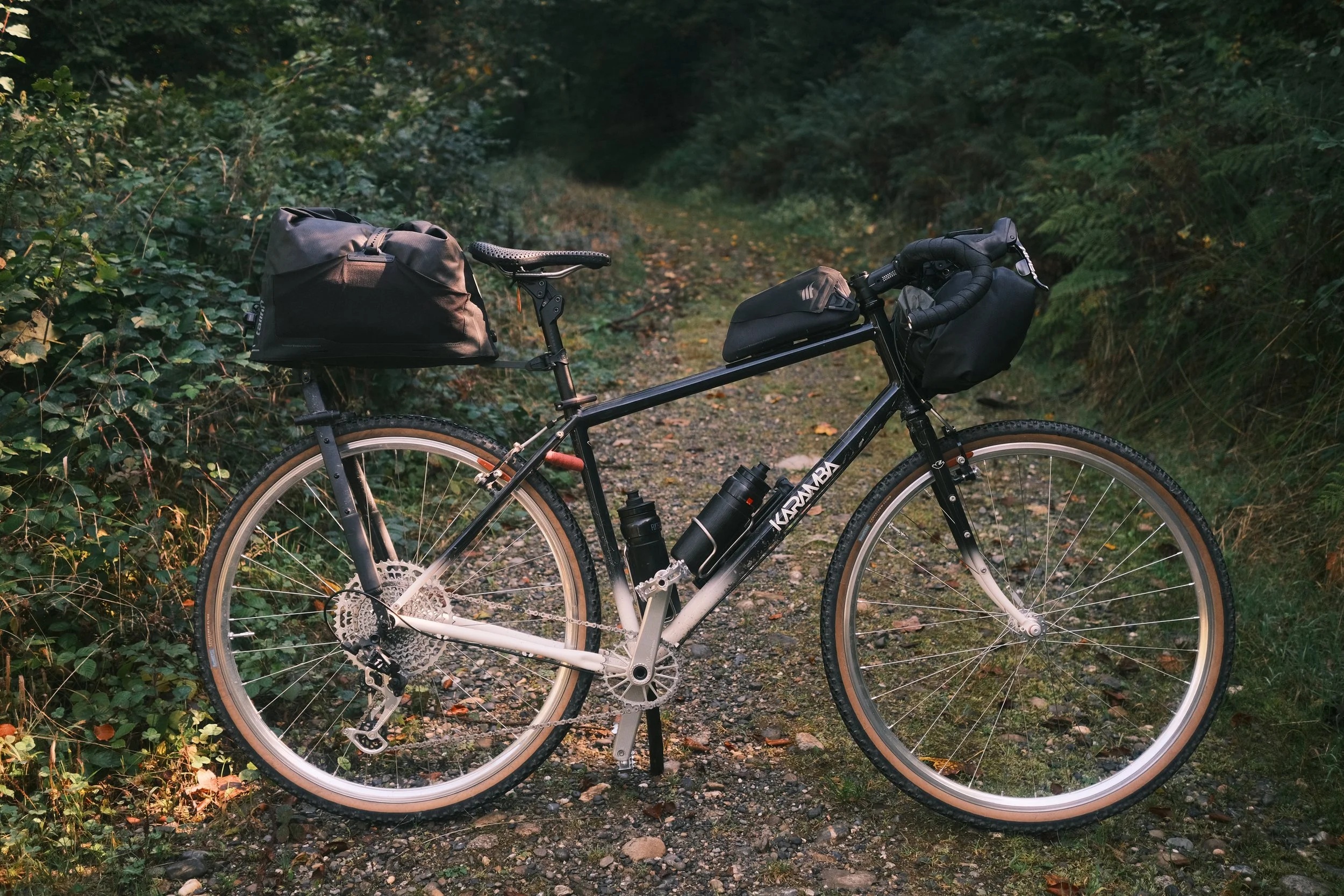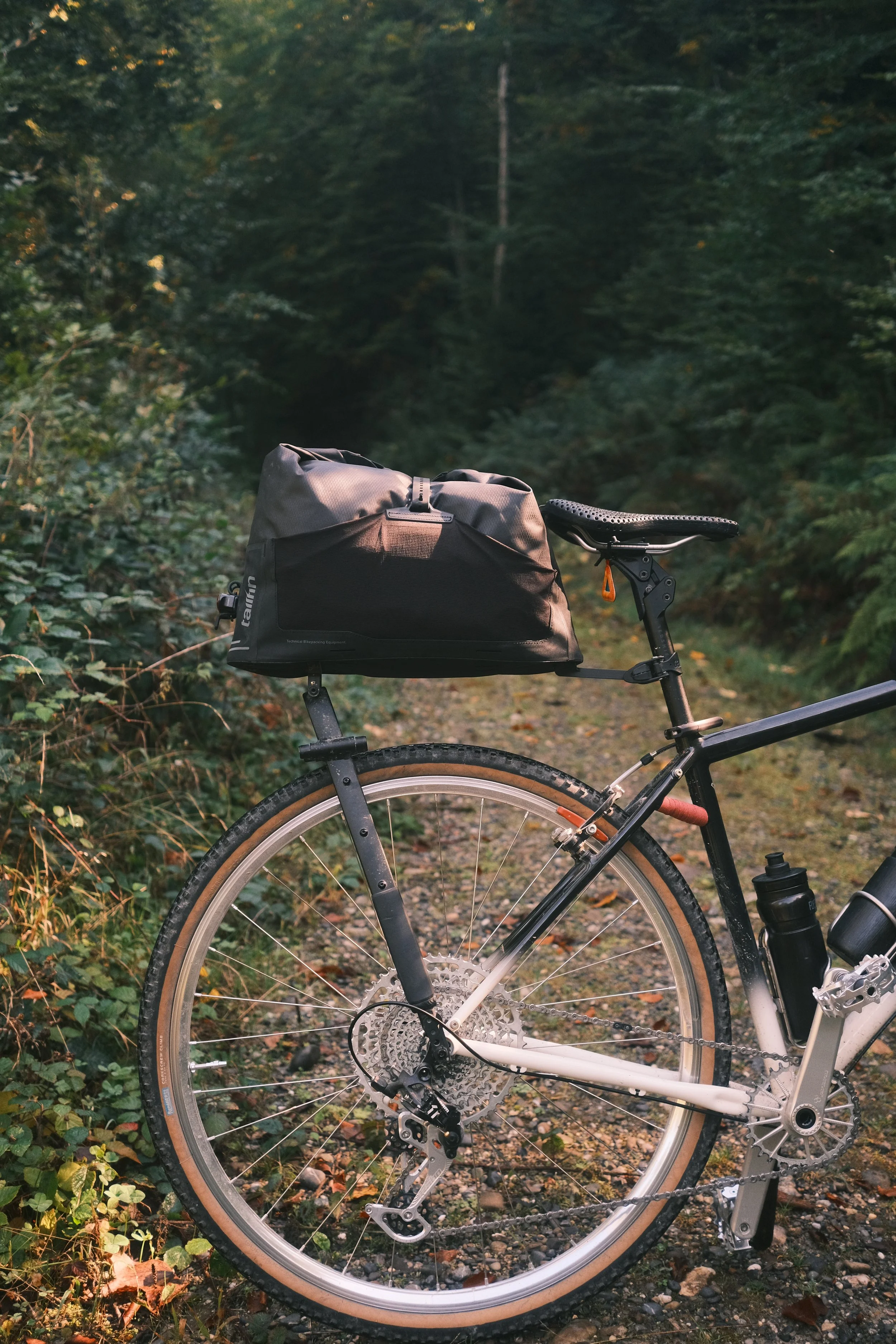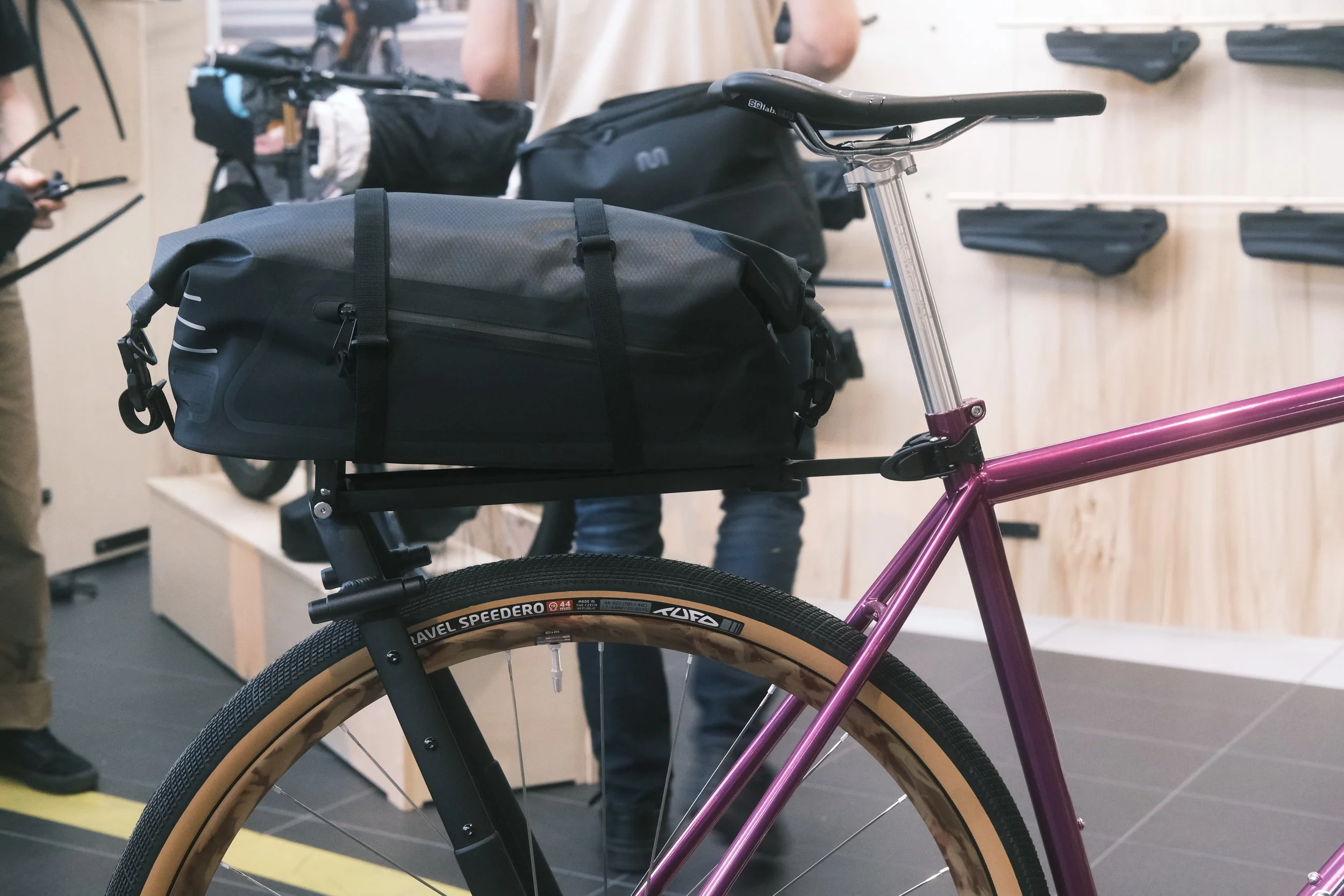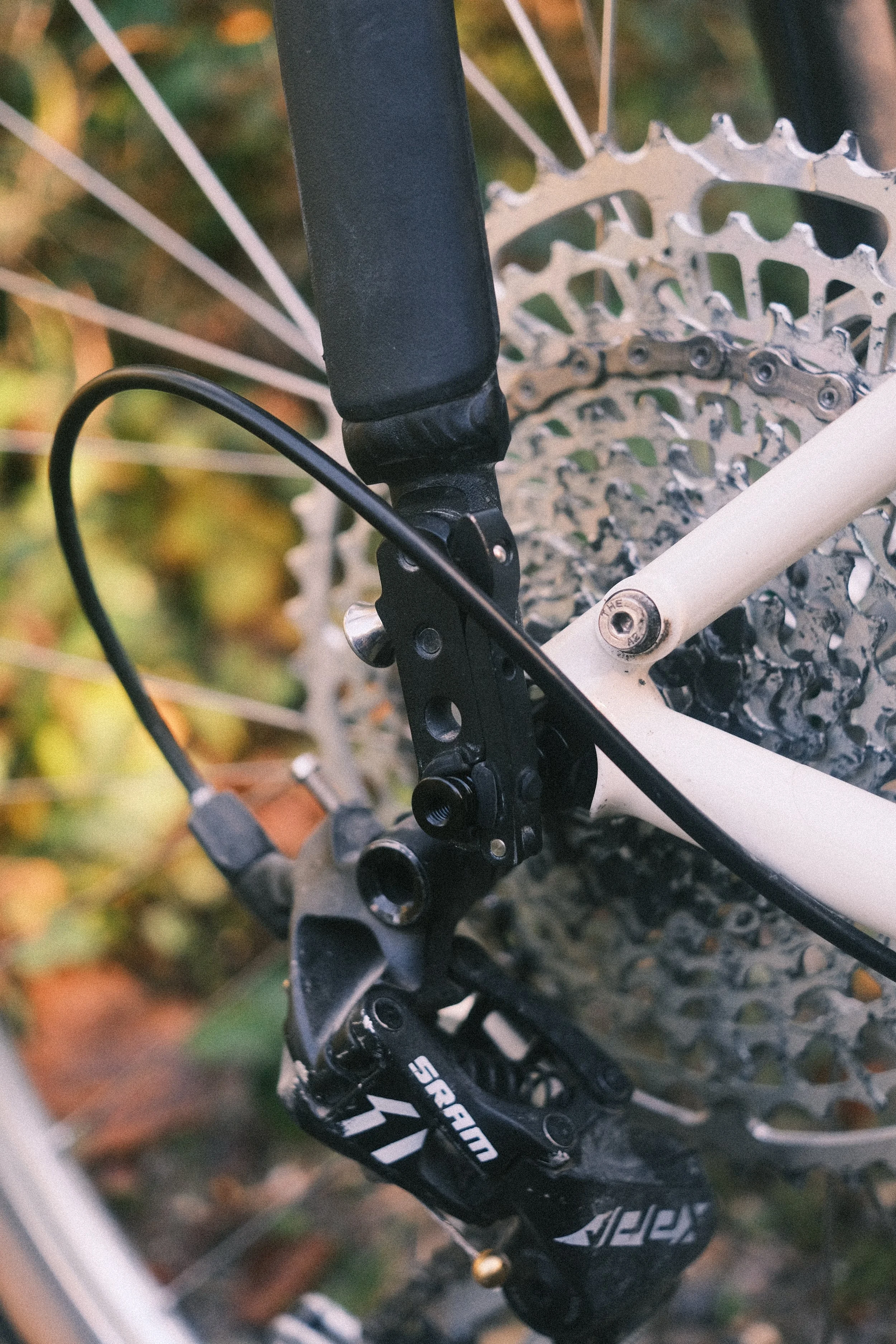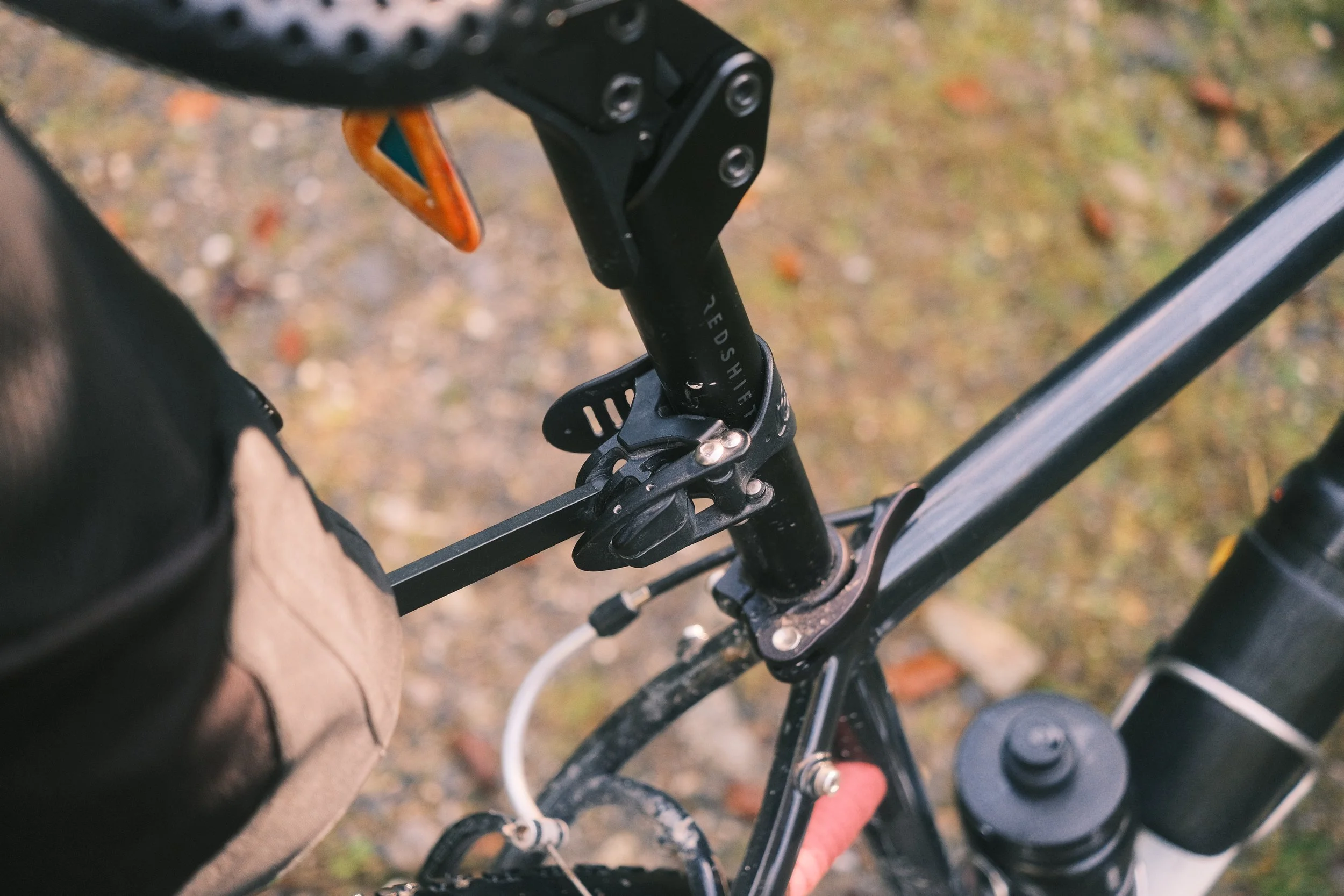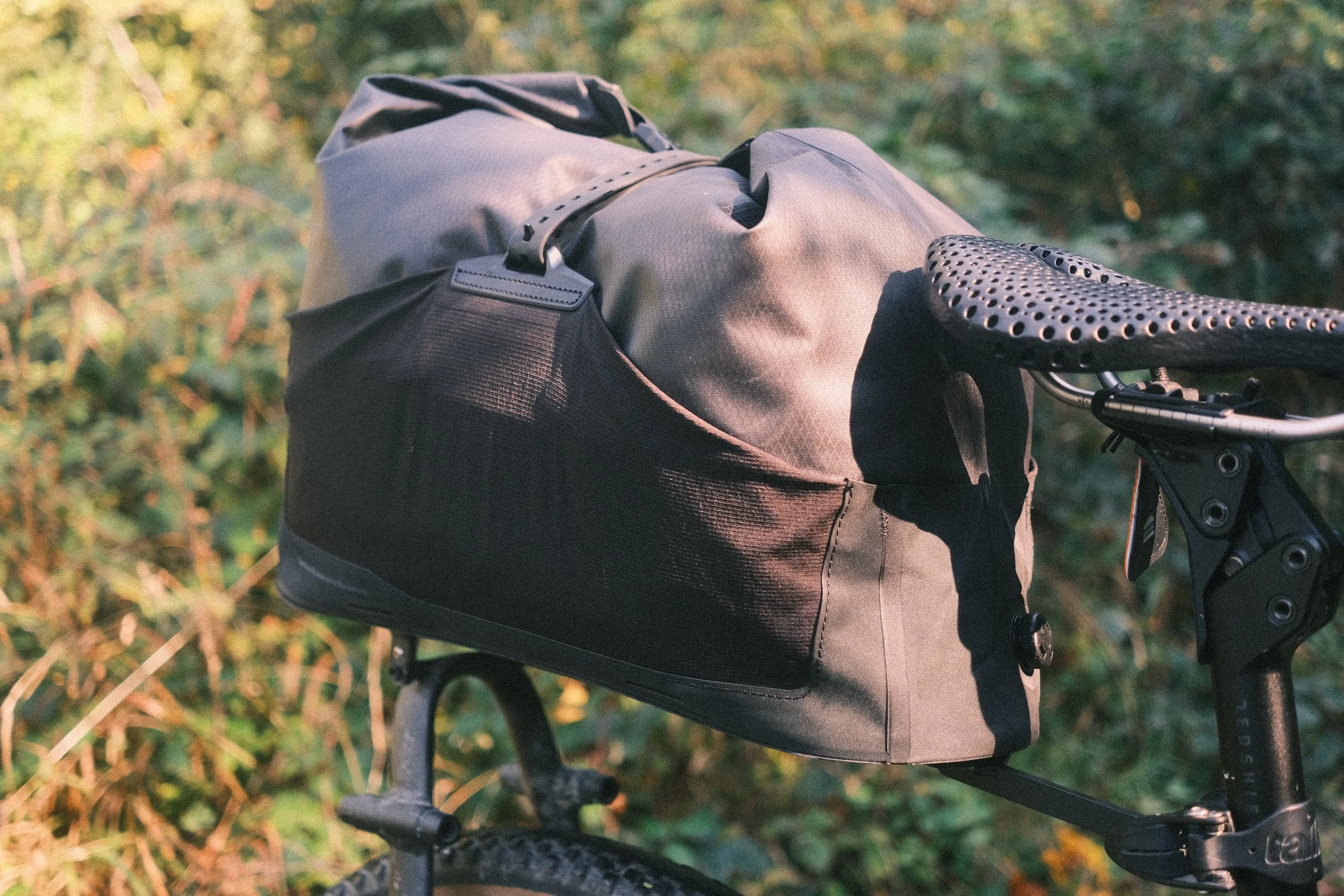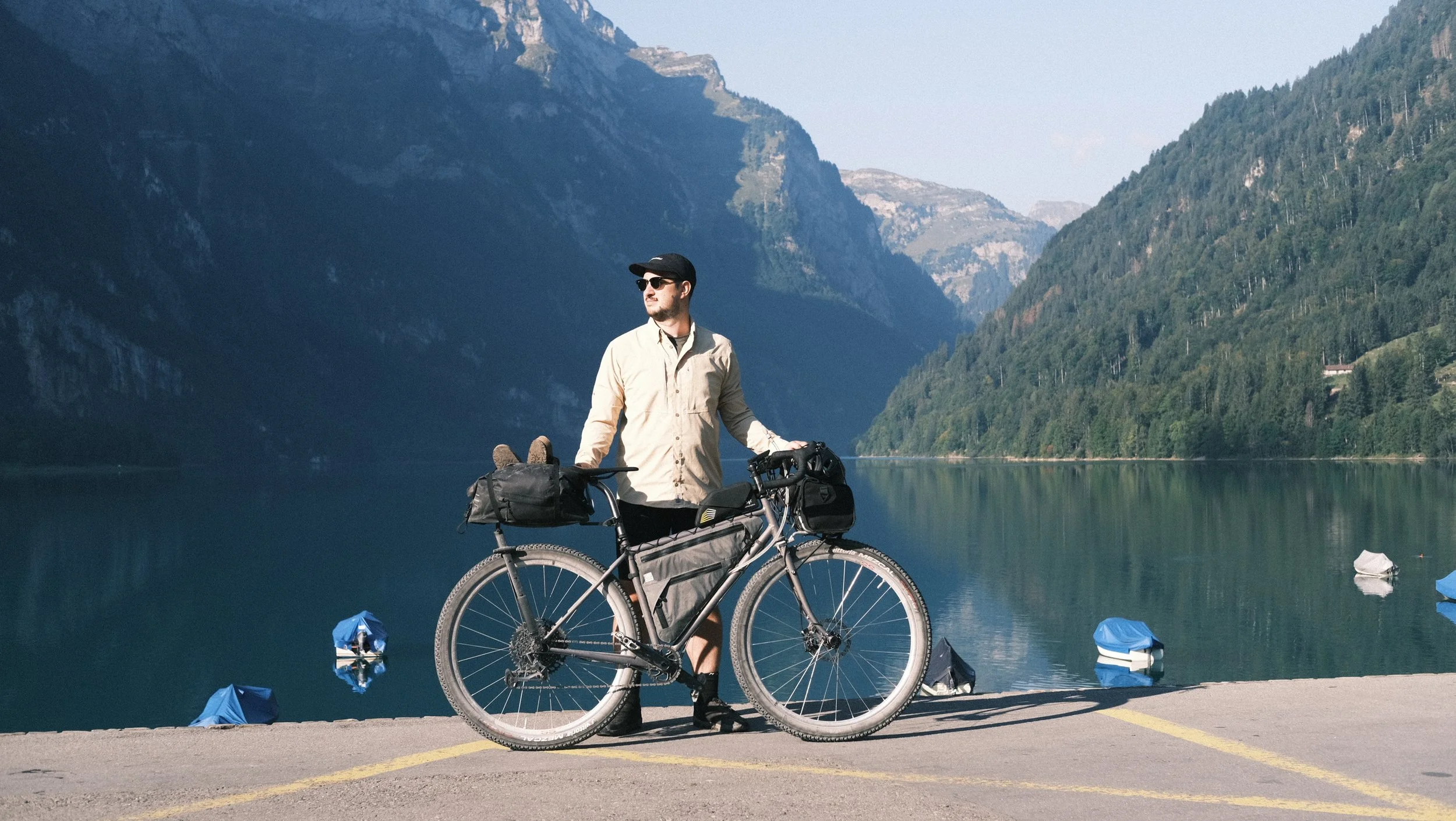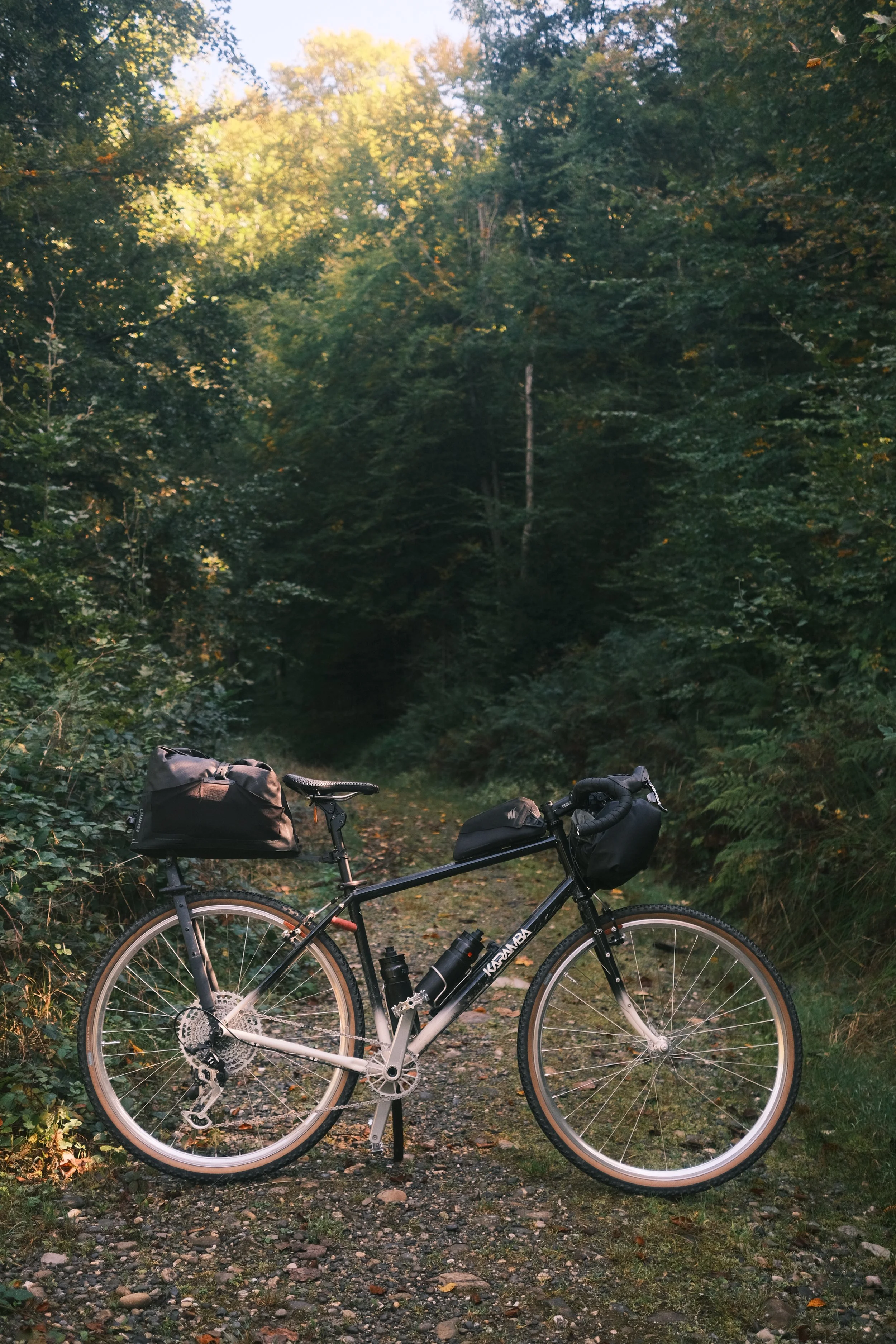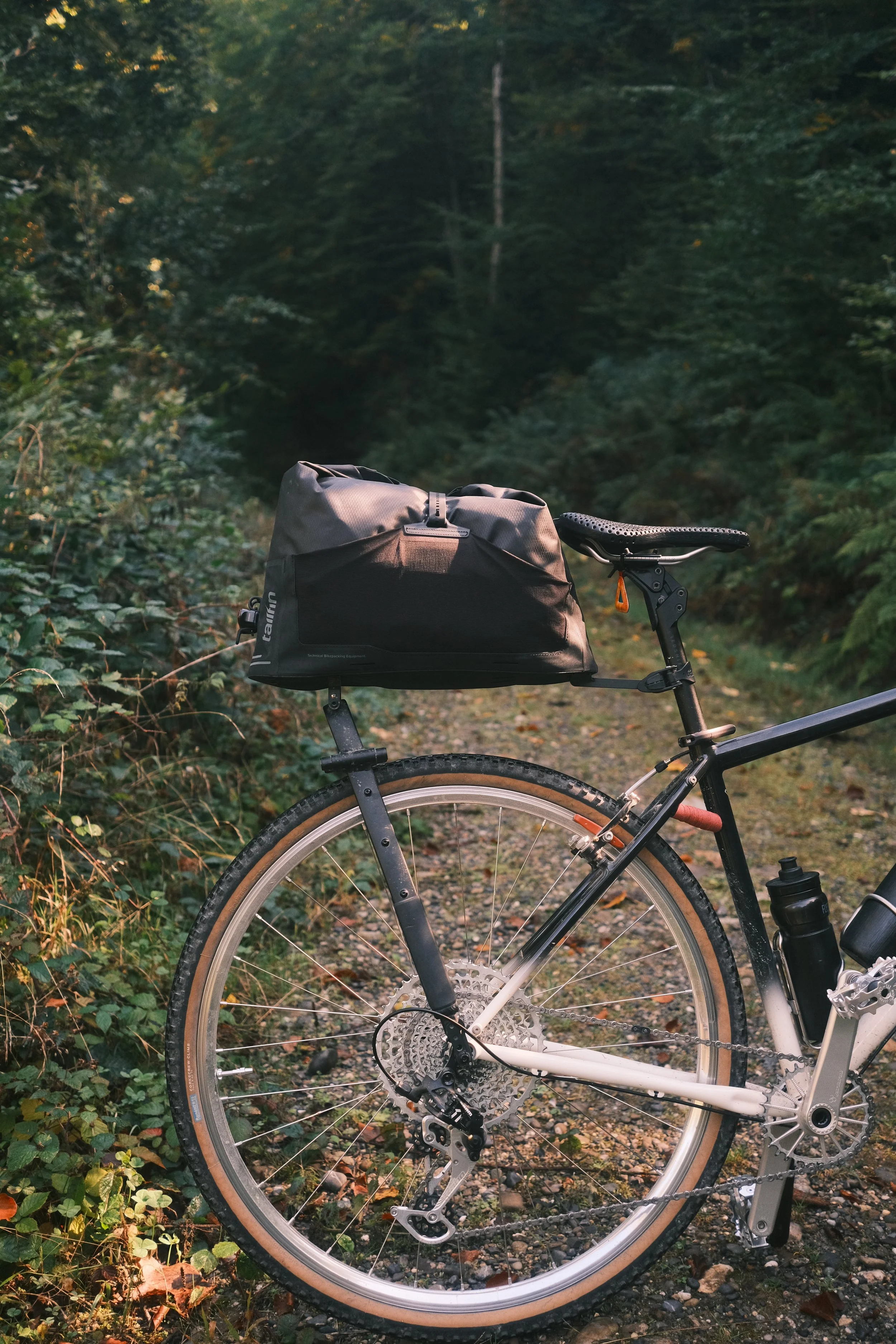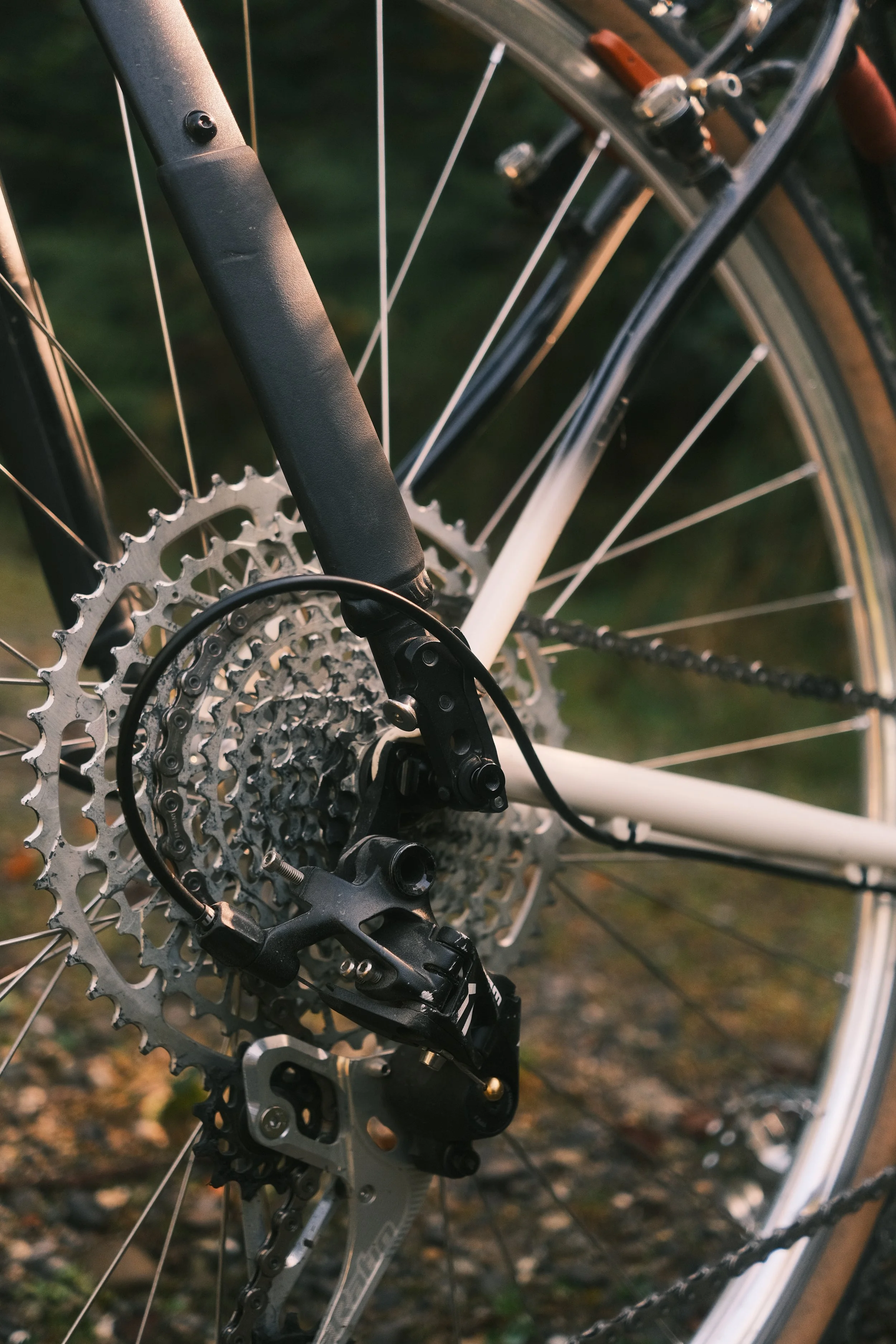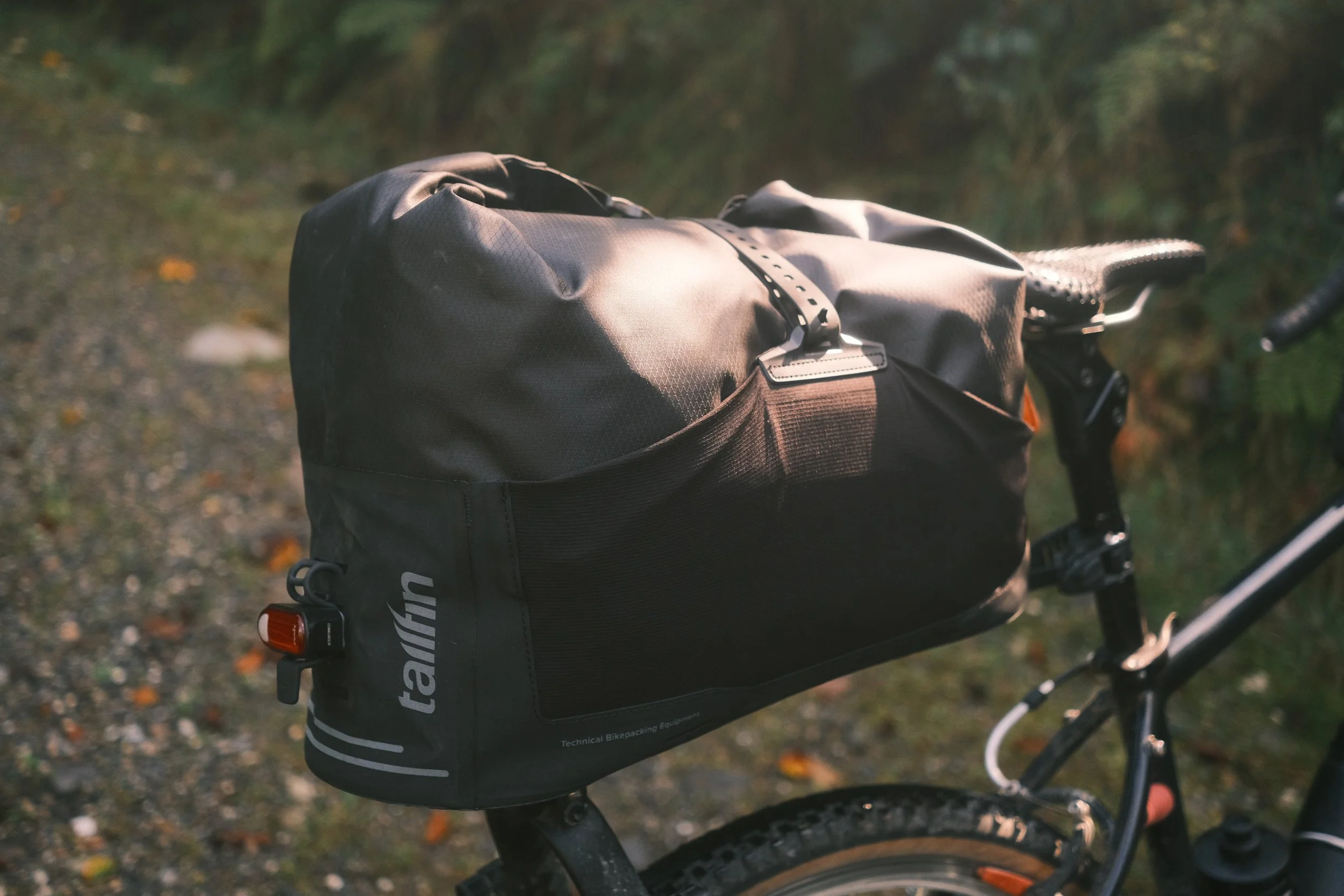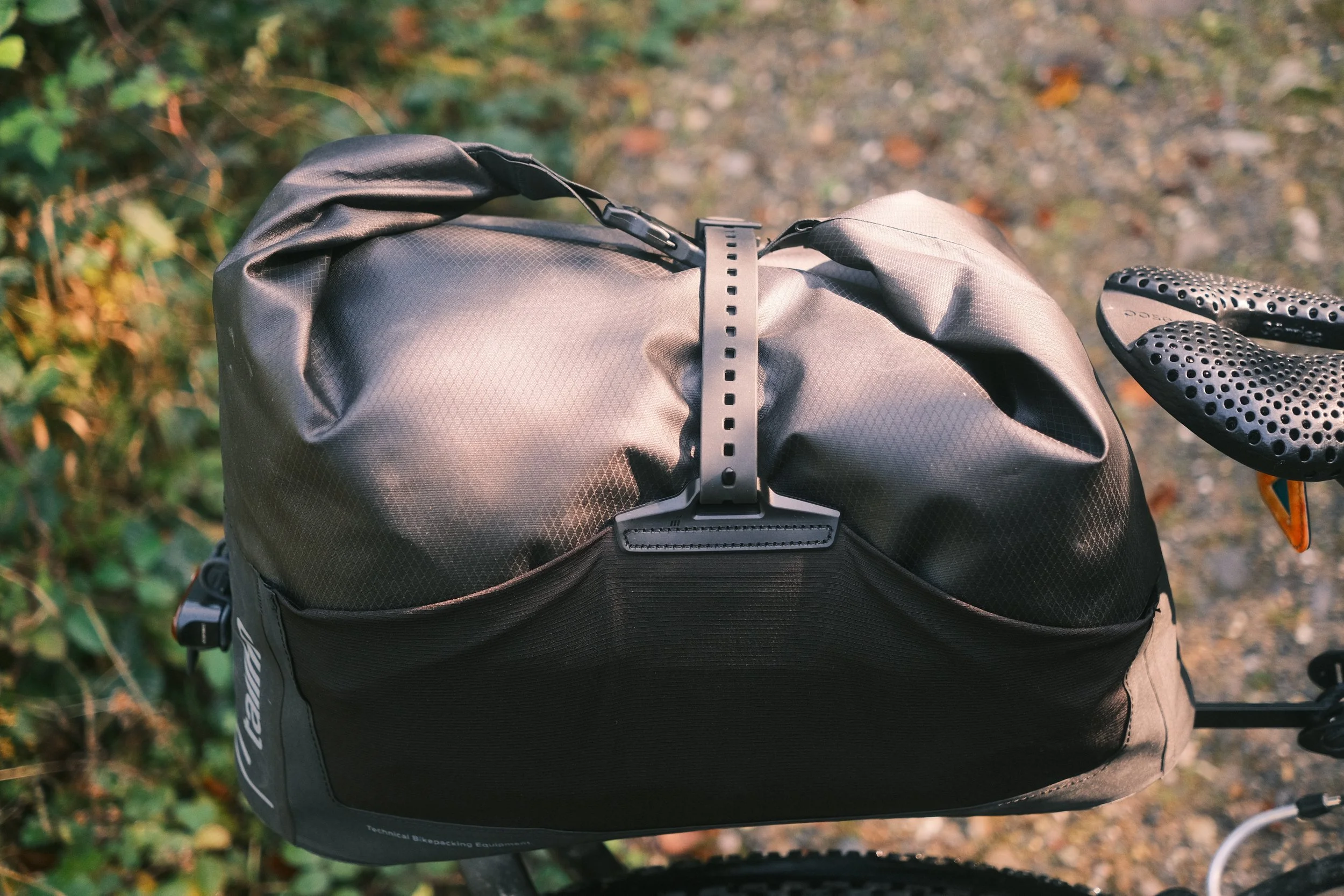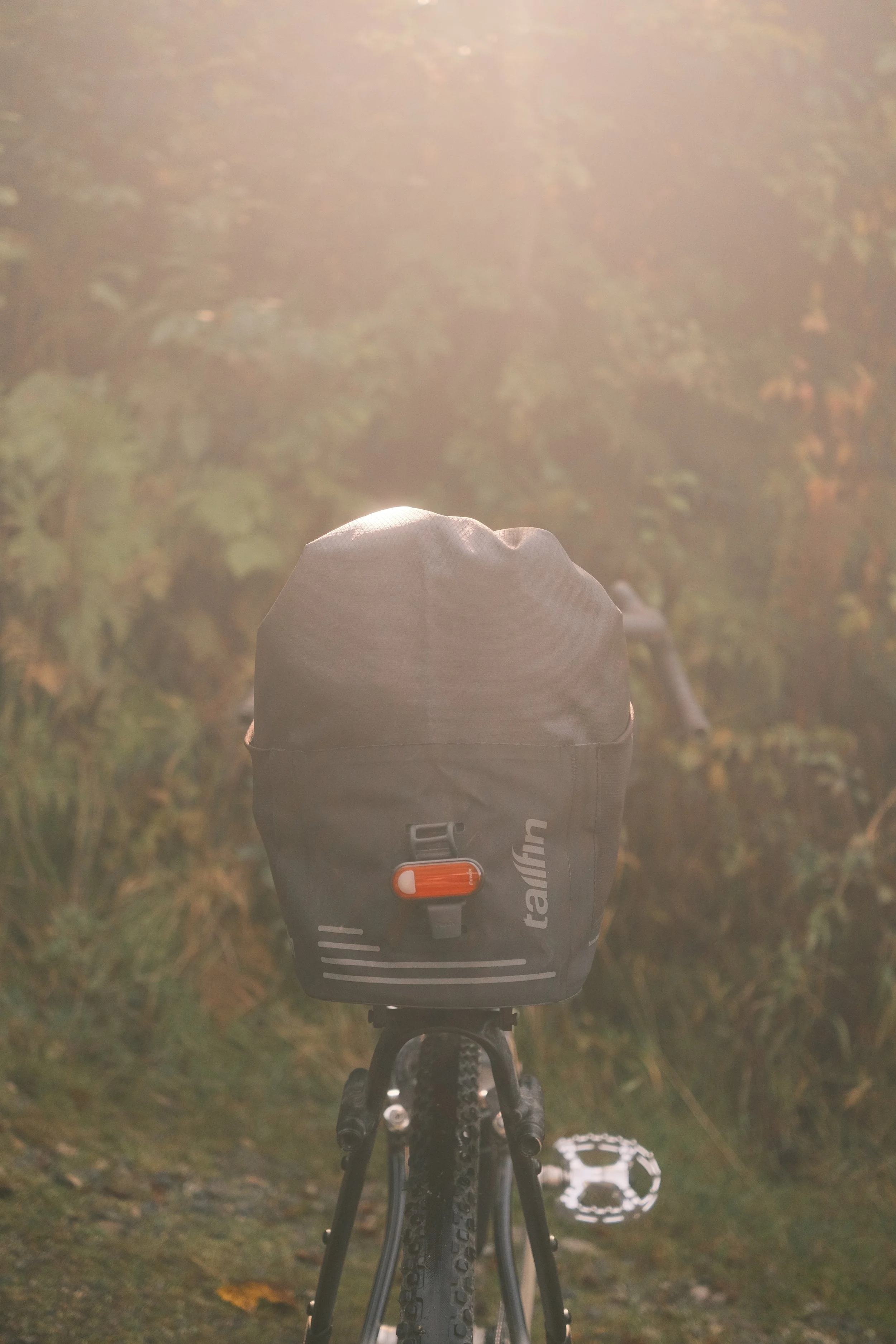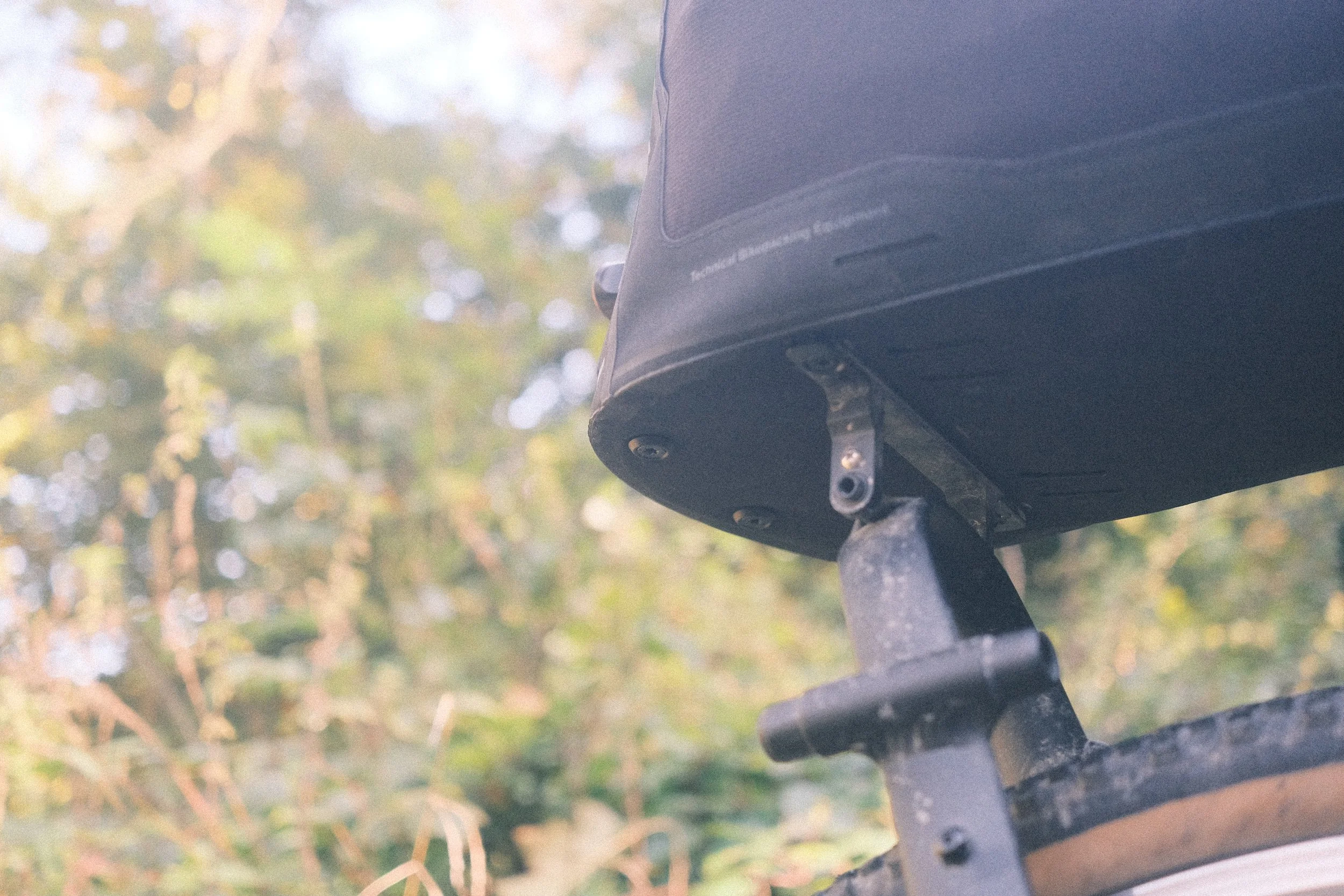Tailfin AeroPack in the Long Haul — My Experience After Three Years of Bikepacking
Note:
This review turned out a little longer than usual — so grab yourself a big mug of coffee or tea, get comfy, and take your time.
Why the AeroPack?
If you’ve ever ridden with one of those “arse-rocket” saddle bags, you know the horror: you cram it full, start rolling — and ten kilometers later it’s doing the cha-cha: swaying left, right, clanking, annoying you until you re-tighten the straps. Ten minutes later, rinse and repeat. On gravel or steep climbs, it can really get on your nerves.
At the same time, huge pannier racks with massive side bags always felt like overkill to me — and not exactly the sleekest, most “sporty” way to carry your gear.
So I got fed up. I wanted something that just works, but still lets you carry a good load. Tailfin’s AeroPack promised exactly that: a bag bolted rock-solid to the bike, zero wobble. And yes — so far it’s delivered. My dancing saddle bags are now a thing of the past. Let’s dive deeper.
Who is Tailfin?
Tailfin is a British company from Bristol, specializing in high-quality bikepacking gear. Their mission: create solutions that don’t just look good, but actually fix real problems. Manufacturing happens in Taiwan — no surprise for bike nerds; that’s where a lot of the world’s top-tier components are made.
What’s especially interesting: Tailfin pours a ton of resources into R&D. Scroll through Instagram or watch any ultra race and you’ll constantly spot riders testing prototypes. Real-world testing, tinkering, refining — done by people who spend days in the saddle. That gives me confidence: this isn’t just about making stuff that sells well; it’s about building gear that actually works out there. And honestly, the attention to detail shows. Small touches, clever solutions — it runs through the whole product experience like a thread.
I even met the Tailfin team at Bespoked 2024. I was surprised by how much passion they poured into their products. Older gear doesn’t get abandoned either — if there are upgrades, they often update past models. That’s something I really respect.
My Gravelbike in full bikepacking mode
Variants: AeroPack vs. AP Rack
Tailfin’s very first product was the AeroPack — born on Kickstarter as a hybrid between a seat pack and a rear rack to solve exactly the wobble issue mentioned earlier. These days, they offer two main setups:
AeroPack (my choice)
Bag permanently connected to the frame with two support struts
Mounts either to the frame or via a thru axle
Additional attachment to the seatpost up front
Lightweight, clean, stable
Ideal if you keep the bag on the bike most of the time (e.g. for camping trips)
AP Rack + Bag
More traditional rack design with two horizontal struts
Bag can be quickly detached via a latch system
Slightly heavier but more flexible
Great for riders who often check into hotels and want to take the bag off quickly
I clearly went with the AeroPack. It’s lighter, yet rock solid. The universal thru axle fits without any issues, and once mounted, the whole system feels absolutely bombproof. Both setups offer around 18 L of storage, which can be expanded with side bags (5, 10, 16 or 22 L). So even if you’re going fully loaded, the AeroPack handles it without complaint.
Installation
The install process is essentially identical for both versions. The top is secured to the seatpost via a quick-release. The bottom can be mounted in one of two ways:
Use the included mounting brackets on your frame’s rack eyelets.
Replace your stock thru-axle with Tailfin’s universal axle, which integrates the mounts directly.
I went with option 2. This way, the load is better distributed — not just on two small screws on the frame, but along the wheel axle. Then the rack clips in with a reassuring “click.” In practice, it’s dead simple: ~30 seconds to mount everything, and you’re ready to go.
Build & Materials
With Tailfin, the motto is function over flair. That doesn’t mean the stuff is ugly — it’s sleek, minimal, and suits nearly any bike — but it’s built to solve problems. That’s how it feels to ride with it.
My AeroPack has seen nearly three years of hard use: fully loaded, dropped, crashed, slammed down — it’s taken quite a beating. The result? No tears, no leaky seams, nada. The craftsmanship is excellent.
Fun fact: In my day job I work in waterproofing. The material Tailfin uses for the bags — Hypalon — is the same stuff I use to seal buildings permanently. So I know firsthand how tough this fabric is. It’s an excellent choice.
Of course, there are reports from ultra races about failures here and there — usually at the seatpost connection points, where the highest forces act. Occasionally you hear of bent struts. But considering the extreme conditions in those events, such failures are impressively rare. And the best part? The system is fully modular. If something breaks, you don’t replace the whole thing — just the specific part. That’s hard to beat in terms of sustainability.
The AeroPack is fully waterproof, shows no signs of material fatigue, and the latch mechanism still snaps securely into place, even when everything’s dusty.
In the Field: Real-World Use
On everyday rides, AeroPack has been a revelation. No wobble, no retightening straps — just ride. With ~20 L capacity (and easy overpacking), it covers medium to long tours easily. Rain, dust, gravel — whatever I threw at it, my gear arrived bone dry. I’ve been very satisfied, and have had basically zero issues.
Handling is great: click in, push, done. To remove, just one hand — bag into your tent or room, done. Honestly, it feels nearly as convenient as a backpack.
Of course, not perfect. The side zippers? Three years, never used. The roll-top straps like to slip if not crossed. The black interior devours light — good luck pulling out your headlamp at night. And yeah, the bag sits fairly high — you feel it in the drops. On very small frames (3XS), geometry challenges may arise.
I plan to ask Tailfin at Bespoked whether they have a fix for that this year.
Over three years and thousands of kilometers across Italy, Spain, Germany, Switzerland — I did not baby the AeroPack. It never failed. One mishap: the seatpost clamp slightly opened once — probably my own fault closing it poorly. Otherwise? No issues.
Strengths and Weaknesses at a Glance
Strengths
No wobble, no sway — even when fully loaded
Around 20 L capacity, can be overpacked
Durable, waterproof, built to last
Modular design with spare parts and upgrades available
Weaknesses
Side zippers are practically useless
Roll-top straps can slip if not crossed
Black interior makes finding small items in the dark a game of hide and seek
High center of gravity — noticeable when climbing out of the saddle
Geometry challenges on very small frames
The New Cargo Version on Test
Mid-year I got Tailfin’s new AP18 Cargo version. Compared to the classic model, it brings useful updates:
Simpler closure: fold the top and interlock ends — no multiple straps
No side zippers — replaced with flexible cargo pockets, handy for jackets or snacks
Stretchy material that holds shape, even after heavy use
Brighter interior — finally you can see things in low light
Air valve for easy compression
Compatible with existing racks
Tailfin likens the difference to standard bibs vs. cargo bibs: both work, but cargo adds utility. For me, Cargo is now the clear choice.
Benefits of the Cargo Version
Single-buckle closure: quicker and more secure
Side cargo pockets: far more practical than the old zips
Light interior lining: finally, visibility inside the bag
Air valve: makes compressing the load a breeze
Compatibility: fits existing racks
My Take
The Cargo version fixes nearly all the small gripes I had with the standard model. There’s really no reason to go back. Tailfin has said some of these features will trickle into other bags eventually, but for now: if you’re buying, go Cargo.
Looking Ahead
Sure, the bag could be a bit lighter. But weight savings usually come at the expense of durability and waterproofing — and the fabric Tailfin uses is seriously tough. I’ll happily carry an extra 200 g if it means my gear stays dry for years. The Cargo version feels like a solid evolution, not a revolution. I’m curious to see what they’ll bring next — maybe something new at Bespoked in Dresden.
Who the AeroPack is For
A great fit for:
Tourers who just want a quiet, stable ride
Riders looking for a durable, low-maintenance setup
Anyone willing to pay a bit more for lasting quality
Less ideal for:
Hardcore weight weenies — there are lighter, but far wobblier options
Riders on very small frames, where the struts can be too long
Those on a strict budget — Tailfin simply isn’t a “cheap and cheerful” option
Tailfin has a clear ethos of quality, and that’s reflected in the price. If you’re primarily hunting for the lowest cost setup, this probably isn’t for you.
Weight & Price Comparison
Here’s a quick reference to put things into perspective:
Tailfin AeroPack Aluminium: ~1,200–1,300 g (rack + bag)
Tailfin AeroPack Carbon: ~1,000–1,100 g (rack + bag)
Apidura Backcountry Saddle Pack (17 L): ~500–600 g
Ortlieb Quick Rack + 16 L bag: ~1,300–1,400 g
So yes, the AeroPack is heavier than a typical seat pack, but roughly on par with a small rack system — just much more stable. Price-wise, the aluminium version runs around €270–300, while the carbon version is about €370–400. Not cheap, but no longer some exotic unicorn either.
Price & Sustainability
Tailfin is expensive, no doubt. But you’re getting a product that actually solves problems and is built to last. Ultra-cheap and ultra-durable simply don’t go together. Production happens in Taiwan — excellent quality, though not local. In return you get full spare part support, modular expandability, and long service life.
In short: the price stings at first, but over time, it’s worth it.
Comparison with Other Systems
A direct comparison with other luggage setups — seat packs, racks, or systems from brands like Apidura, Ortlieb, or Old Man Mountain — is intentionally not part of this review.
The reason: I’m planning a dedicated comparison article in December, once I’ve put the other systems through proper long-term testing. That way, the topic gets the space it deserves and all the info will be in one place. Trying to cram it in here would get messy fast.
Transparency
I purchased the original AeroPack with my own money. The Cargo version was provided by Tailfin. My opinions are completely independent and based solely on my own experiences.
Conclusion
For me, the Tailfin AeroPack isn’t a fashion accessory — it’s a tool that genuinely solves problems: no wobble, no sway, stable handling, waterproof and built to last. Yes, it’s expensive. But if you spend a lot of time on the road, every cent is worth it.
If you only roll down to the lake on sunny Sundays, you probably don’t need it. But for regular tourers and bikepackers, the AeroPack remains one of the best systems out there.
So, that’s my (long) take. If you’ve actually made it this far: congrats — your coffee or tea is probably finished by now. And maybe, just maybe, you’re starting to feel the itch to try the AeroPack yourself.

